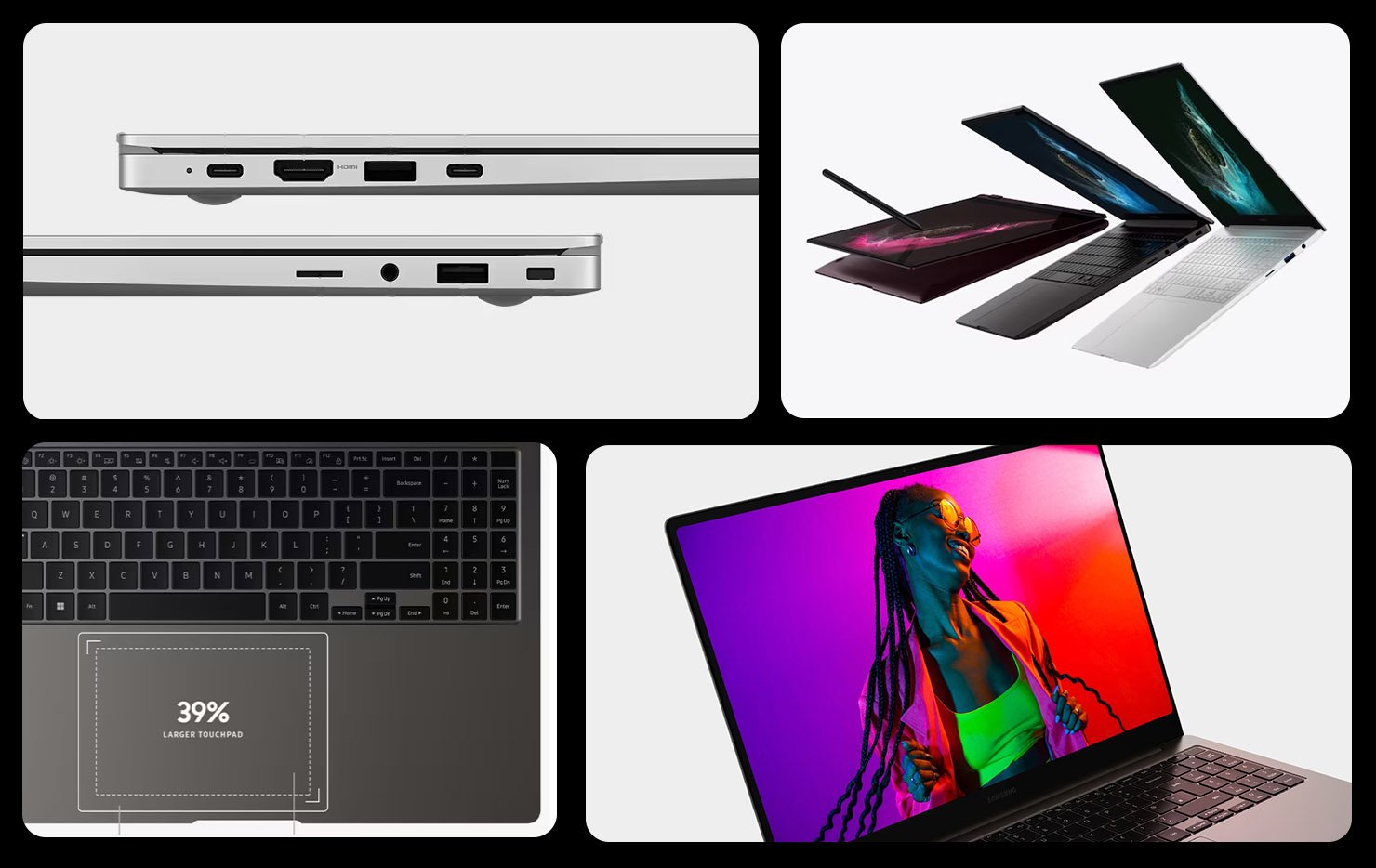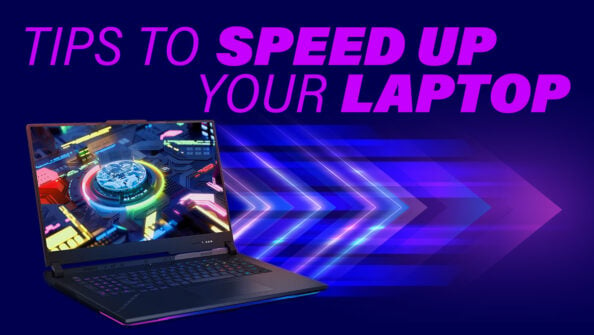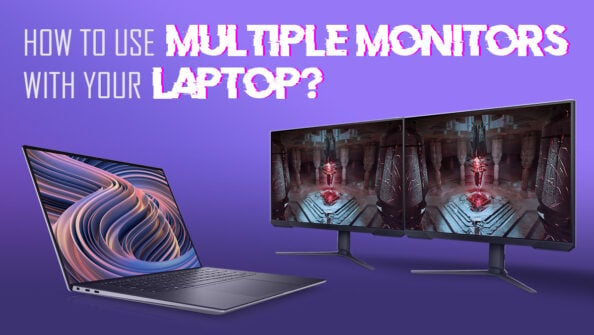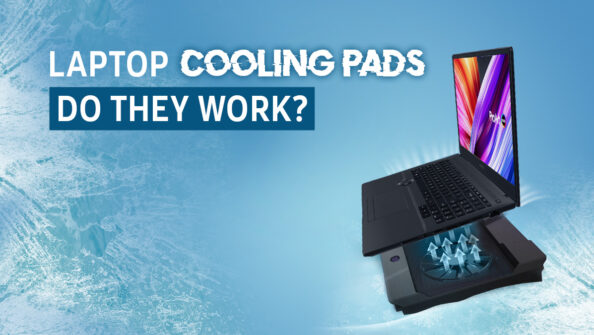TABLE OF CONTENTS
Samsung laptops are by no means as popular or widespread as one would expect. And, well, with good reason: this venerable South Korean giant never really went “all out” up until two to three years ago.
It’s been making Windows-based devices for much longer than that, but they were always obscure, somewhat rough around the edges, and, well, few in number.
They felt like conversation starters, with their colored metallic chassis, jaw-dropping displays and, at times, wholly unique bells and whistles. Quirky and unique, sure, but by no means mainstream or sought-after.
Beautiful though they were, their MSRPs always left a bit to be desired and, for the most part, it felt like Samsung wasn’t that serious about competing with the Apples and Microsofts of the world; instead, it just wanted to show off something cool and unique — and, in doing so, lay the groundwork.

Now, though, in 2023, there are more Samsung laptops than ever before — some of which are not only wholly unique but, depending on your use-case, perhaps even worthy of a glowing recommendation.
Samsung has become a lot more focused in its efforts, and the results are clear: its laptops are much more streamlined, alluring, and, perhaps most importantly, powerful.
Its top-of-the-line offerings are all made from high-quality materials, they feature high-resolution AMOLED displays, versatile port selections, and power-hungry components — all the while being thinner than most competitors.
Samsung is offering a truly killer combination of features and specs, and is seemingly taking a slightly different route when compared to the vast majority of other OEMs.
It is, one could argue, late to the proverbial party, so a slightly different take and approach was not only preferable but perhaps even necessary — hence the disparate aesthetics, “spec’d-out” displays, and bold color schemes.
Whether these niceties and features are of any use to you specifically will obviously depend on your needs and preferences, but these laptops are nonetheless hard to ignore — pricey though they are.
Samsung Laptop Portfolio — Full Breakdown
With most top-of-the-line Samsung laptops, you can expect the following: spectacular build quality, bright, color-accurate displays, mind-blowing thinness, and a series of features and additions that are geared towards those who are already a part of the Samsung ecosystem (phones, tablets, smartwatches).
Case in point:
And, as is so often the case, such a stellar mix is most often accompanied by a fairly steep price.
Samsung’s best laptops are, at times, bafflingly expensive, so they can’t exactly be deemed as impulse purchases. This, also, varies from one region to another.
As with most other OEMs, Samsung, too, has a few wholly disparate laptop lines on offer, each of which caters to a slightly different demographic and/or use-case.
We will, for the purpose of this article, focus solely on Samsung’s current product stack, as going over its past offerings wouldn’t make a whole lot of sense.
Galaxy Book 3 Ultra [16”] — For Content Creators
The Galaxy Book 3 Ultra is, without a shadow of a doubt, the very best laptop which Samsung has to offer. It’s not without its quirks.
It features an off-center trackpad, a superfluous num pad on the right-hand side, somewhat wobbly hinges, and mediocre battery life; still, even with those issues, it’s still amongst the finest and most unique Windows laptops on the market.
It is, at its core, targeted towards content creators and creative professionals and is actually one of just three laptops in Samsung’s product stack to have a dedicated graphics card: an NVIDIA RTX 40 series GPU, to be more exact (4050/4070, depending on the SKU).
The latter only has a 60W TGP though, so don’t expect any miracles.
This, in addition to an H-series 13th Gen processor from Intel and either 16GB or 32GB of soldered RAM, means that you’re never going to lack power or performance.
Its most distinguishing “feature,” however, is its display: up to 500 nits of maximum brightness when viewing HDR content (or 400 for SDR), a 120Hz (variable refresh rate) AMOLED display, alongside spectacular coverage of the sRGB, AdobeRGB, and DCI-P3 color gamuts.
The Galaxy Book3 Ultra isn’t necessarily the most powerful laptop around — due to its thinness and somewhat power-constrained components — but it sure does tick all the right boxes and, as such, is an easy (if pricey) option to recommend.
Galaxy Book 3 Pro [14”/16”] — A Well-rounded Performance Ultrabook
This is Samsung’s MacBook Air alternative and, needless to say, is quite a looker.
It adheres to the well-known “premium ultrabook” formula, comes in two different form factors (a traditional clamshell design and a 360 convertible), and is amongst the finest thin-and-light notebooks on the market.
Then again, those features and niceties, while certainly stellar and highly welcome, don’t really make it stand out from the crowd.
ASUS has a bevy of different ultrabooks on offer, all of which come with jaw-dropping OLED displays and magnesium alloy chassis, and so do Dell, HP, Lenovo, and others.
It does have a P-series processor from Intel but, in all fairness, that doesn’t really warrant the “Pro” moniker.
It’s a stellar ultrabook, there’s no doubt about it, but there’s no tangible reason why one would buy it over, say, a Dell XPS 13 Plus, a Lenovo Slim 7 Pro, or an equivalent model from ASUS.
If you’re interested in seeing how it stacks up against Apple’s M2 MacBook Air, make sure to watch the following video:
Galaxy Book 3 — Solid, If a Bit Middling
The regular Book 3 should, for the most part, be avoided.
It features much of the same DNA as Samsung’s more premier offerings, but also a few unique drawbacks and downsides, like a subpar 60Hz 16:9 IPS display (65% sRGB coverage says it all), a U-series processor from Intel, and no Thunderbolt support at all.
It’s not a bad laptop by any stretch of the imagination, but other than its incredible build quality, it doesn’t really stand out in any which way. It’s an “affordable” option worth checking out, but by no means does it warrant a recommendation.
The Galaxy Book 3 360, on the other hand, is a much better option. It doesn’t cut as many corners and actually provides a stellar, well-rounded experience for the asking price.
It is, one could argue, amongst the finest — and most premium — ultrabooks in its price range, so definitely give it a look if you’re okay with its overly glossy display and shallow keyboard.
You can learn more about it from the following video:
Which Samsung Laptop Should You Buy?
The “ordinary” Galaxy Book 3 should, for the most part, be avoided. Its screen leaves way too much to be desired and its spec sheet, while definitely sufficient, isn’t anything worth writing home about.
The Galaxy Book 3 Pro/Pro 360, on the other hand, offers a very alluring mix of both looks and performance, in addition to a stellar selection of ports and a display that’ll surely serve as a tremendous boon for both content creation and consumption.
The Galaxy Book 3 Ultra, on the other hand, is essentially the very best laptop which Samsung has to offer which doesn’t, however, make it a worthwhile investment for every kind of user.
It’s large, beautifully made, and incredibly powerful, too, but it’s not exactly a portable workstation or, say, a spec’d out behemoth that will chew through any task you might throw its way.
It is, essentially, a souped-up, spec’d-out MacBook Pro alternative with a few unique bells and whistles thrown in for good measure.
It cannot compete on even footing from a sheer horsepower perspective, but don’t let its sleek and slender chassis fool you: it sure can pack one heck of a punch.
You can watch the following video if it happens to have piqued your interest:
Samsung Laptops — Weird, Quirky, Interesting
Categorizing Samsung’s laptops is quite tricky.
On the one hand, they’re absolutely amazing — stellar build quality, jaw-dropping displays, respectable I/O, and a level of cross-device synergy that can, in some cases and circumstances, compete with Apple’s.
They’re also impossibly thin and light, which makes them amongst the most premium and alluring ultrabooks on the market.
On the other hand, they’re… not really special.
They’re not the most powerful, they — to a certain degree — sacrifice performance in favor of a more petite frame, their keyboards are incredibly shallow, and their displays, beautiful though they are, are by no means as unique in the Windows world as they would’ve been just a few short years ago.
Samsung has a very interesting formula and, for the most part, has stuck the proverbial landing. That being said, it’s somewhat hard to recommend any of its laptops in a world where so many other laptops exist and can, more often than not, be purchased for less.
So many OEMs are now competing on even footing, and Samsung, despite its efforts, has done very little to make one pick it over its competitors.
Now, to be fair, if you’re already a part of Samsung’s ecosystem and are in need of an impeccably built ultrabook (one with ample power and a display to die for), then going with a Galaxy Book 3 Pro or, say, the Ultra (in case you need a bit more performance grunt) would make a lot of sense.
Samsung is trying to create a seamless, frictionless ecosystem and, in doing so, finally rub shoulders with Apple, so if that sounds like something you or your workflow could benefit from then, by all means, make the plunge — Samsung’s laptops are amongst the finest out there.
Conclusion — Are Samsung Laptops Worth It?
That’s a tough question to answer. They are a fair bit different from their competitors (more in terms of looks and specific features than anything else), but they’re also quite expensive and, for the most part, don’t offer anything truly unique.
They are well-rounded, though, and are possibly a cut above the rest in regards to their displays and overall build quality. Whether that warrants a loftier price tag is heavily up for debate.
Even the best, most spec’d-out model isn’t all that powerful because its components don’t have enough thermal headroom to run at full throttle, so if you’re an industry professional — one with a tremendously demanding workload — it’s not going to be a good enough “fit.”
All in all, they’re stellar ultrabooks that combine incredible build quality, jaw-dropping displays, and a very respectable level of performance.
There’s very little to complain about other than the shallow keyboards, wobbly hinges, and the fact that their displays come with the glossiest coatings you’ll ever lay your eyes on.
Are they better and a more worthwhile investment than equivalent offerings from, say, ASUS, HP, and Lenovo?
That’s up for you to decide and, needless to say, it heavily depends on whether you can snag your model of choice at a discount and whether you’re already a part of Samsung’s ecosystem.
If you’re after a convertible with a high refresh rate display, a stellar selection of ports, pen support, and an all-aluminum chassis, the Galaxy Book 3 360 is hard — if not impossible — to beat.
If you need a traditional clamshell laptop, then Samsung’s offerings aren’t quite as easy to recommend due to the sheer amount of competition out there.
FAQ
Let’s go over a few potential questions you might have regarding Samsung laptops and all that they entail:
Are Samsung Laptops Good for Content Creation?
Absolutely!
In fact, their capable internals and bright, color-accurate displays make for a killer combination, and will surely deliver the kind of experience you’re after if you’re primarily focused on graphic design, UI, UX, web, photo editing, and whatever else of that nature.
They’re not a good pick for professional video editing or, say, serious 3D work.
For those workloads, the only viable option from Samsung would be the top-of-the-line Galaxy Book 3 Ultra.
Then again, if you need that much power, there are many other options on the market that not only retail for less but can also exceed its performance — with ease, one might add.
Are Samsung Laptops Good at Gaming?
Not really.
Only the Galaxy Book 3 Ultra comes with a top-tier dedicated graphics card (either an RTX 4050 or a 4070) but, due to its thin chassis, the GPU inside simply cannot draw the necessary amount of power so as to really deliver the kind of performance one would expect.
Still, it will deliver respectable frame rates, especially if you employ a bit of DLSS.
Regular Galaxy Books come with Intel’s Iris Xe iGPUs which means that you’d be limited to older, legacy titles or esports ones like VALORANT, League of Legends, DOTA 2, and such like.
All in all, Samsung laptops are not geared toward gamers, so if reaching high frame rates is your primary goal, you’ll have to look elsewhere.
Are Samsung Laptops Worth It?
That really depends on the model.
The Galaxy Book 3 360 is actually quite competitively priced and is amongst the best convertibles out there — which, for the record, speaks volumes given the sheer amount of competition.
The Book 3 Pro and Pro 360, on the other hand, are a fair bit more expensive whilst offering a very similar level of performance. They’re top-tier premium ultrabooks but, other than a few unique ecosystem-related features, they don’t have an overly strong pull.
If you already have a Samsung Galaxy phone and are in need of a premium ultrabook — one that’ll deliver exceptional performance in everyday productivity tasks — then going with one of these laptops sure does make sense.
If that’s not the case, then there are many other options out there, all of which can often be found for a much more palatable asking price.
Over to You
What are your thoughts on Samsung’s laptops? Have you ever used any of them and, if so, what was that experience like? Let us know in the comment section down below and, in case you need any help, head over to our forum and ask away!
![Are Samsung Laptops Worth It? [2024 Update] Are Samsung Laptops Worth It? [2024 Update]](https://www.cgdirector.com/wp-content/uploads/media/2023/07/Are-Samsung-Laptops-Worth-It-Twitter-1200x675.jpg)

![Laptop Displays — Panel Types compared [IPS/OLED/TN] Laptop Displays — Panel Types compared [IPS/OLED/TN]](https://www.cgdirector.com/wp-content/uploads/media/2024/03/Laptop-Displays-—-Which-Panel-Technology-Should-You-Go-With-Twitter-594x335.jpg)



2 Comments
24 November, 2023
I bought a NP-RV510I – Essential Notebook three years ago and it absolutely useless. It may have a good display or memory but I wouldn’t know.. after taking ten minutrs to log in every time, it crashes reoeatedly. A webpage takes five minutes to load. Having several tabs open is a non-starter unless you cancel your afternoon to view them. It updates almost every time I start the thing, taking 10 minutes to 1.5 hours to get to the log in page. It is virtually unusable. I have superfast broadband. How I haven’t put it through a window before now is beyond me.
24 November, 2023
Hi Rachel! That sounds like a dreadful experience, but it’s also worth pointing out that that model, in particular, is horrendously underpowered (and ancient, too). And that was the case three years ago as well. If my research is correct, it first came out more than a decade ago, so it’s a miracle it even works at this point.
Do you need any help picking a new laptop?